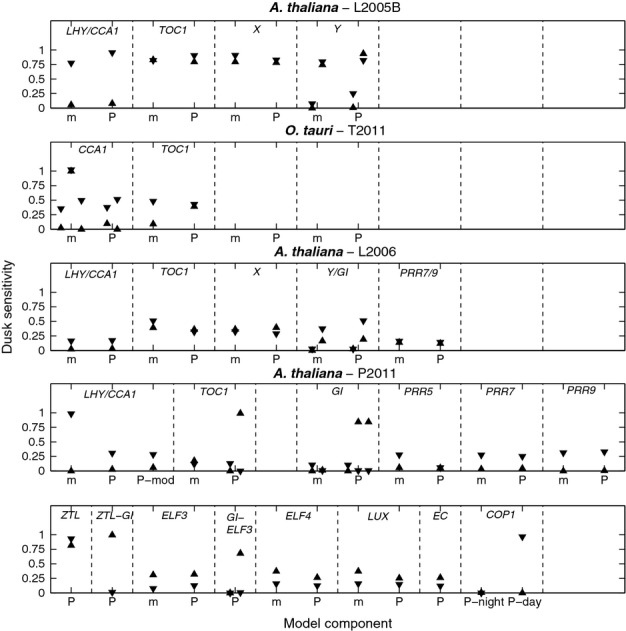Fig 5.

Dusk sensitivities measure phase flexibility. Dusk sensitivities for the peak (upward triangle) and trough (downward triangle) times of mRNA (m) and bulk protein (P) variables of all genes in four of the most flexible models. These were calculated from simulations of the model in 12 : 12 h, light : dark cycles in each case. A dusk sensitivity close to 1 indicates dusk-dominant entrainment; one close to 0 indicates dawn-dominant entrainment. Intermediate values denote flexible entrainment, in which both dawn and dusk information is integrated. Where an expression profile has multiple peaks or troughs, dusk sensitivities are plotted from left to right, in chronological order after dawn, with the convention that in each peak/trough pair, the trough follows the peak in time. While the ArabidopsisL2005B circuit exhibits only dawn or dusk locking, the more flexible OstreococcusT2011 and Arabidopsis L2006 models have several components with intermediate light responses (e.g. the trough of TOC1 mRNA which tracks the middle of the night in both models). The most flexible circuit, ArabidopsisP2011, exhibits the broadest spectrum of dusk sensitivities. The positive correlation between network and phase flexibility is quantified further in Fig. S6.
